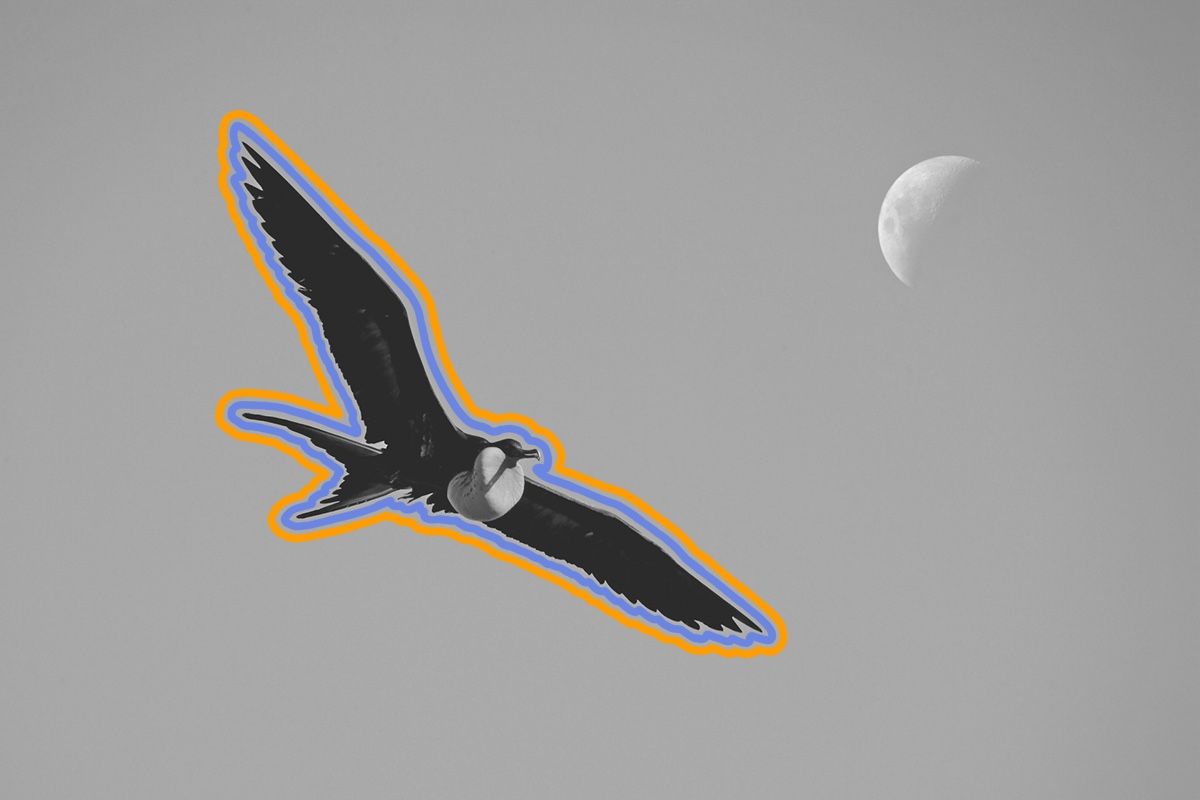

Every animal needs sleep in one form or another, although we still don’t fully understand why. But whether they sleep in underground dens or tree nests, during the night or during the day, some animals have some pretty unique sleeping patterns. For instance, the large hairy armadillo and the little pocket mouse are the real champs when it comes to catching zzzs — they both snooze more than 20 hours a night. Read on for some of the fascinating ways animals have evolved to make the most of their shut-eye.
Otters

Otters just might win the award for most adorable sleeping habits of the animal kingdom. They usually sleep on their backs while bobbing on the surface of the water, and they sometimes hold hands with their buddy while asleep so they don’t drift apart. Other times, they’ll wrap themselves in seaweed to keep anchored in place. As many as 100 otters have been observed wrapped together with seaweed in otter “rafts.” Mother otters also use seaweed to wrap their pups onto their chest, since the babies can’t swim when they’re first born.
Orangutans

Humans aren’t the only primates who sleep on mattresses. Orangutans and other great apes bend and break foliage into complicated sleeping platforms, and they sleep deeply on them in trees or on the ground. Little orangutans practice making these platforms, also called nests, at only six months old, but it takes them until they’re around three or four years old before they get good at it. Researchers aren’t entirely sure why great apes build these platforms, but it may have originally been to avoid falling out of trees.
Bats

Brown bats are often said to be one of the sleepiest animals — they have been recorded sleeping almost 20 hours a day. However, their sleepy rep comes from lab studies done on captive bats in 1969, and the studies hardly mimicked the bats’ natural environment. But even if the duration of their sleep isn’t that unusual, bats are still notable for sleeping upside down. They hang from cave ceilings, tree branches, or other surfaces thanks to specialized tendons in their feet that allow them to grip tightly while still keeping their legs relaxed. Sleeping upside down helps bats defend against predators: Unlike birds, bats can’t just flap their wings to take flight, and they use gravity to take off. Hanging upside down is their pre-flight pose, so if a predator attacks while they’re snoozing, they’ll drop down and instinctively fly off before they’ve even fully woken up.
One kind of bat even sleeps with the proverbial one eye open, a phenomenon known as unihemispheric sleep. In this adaptation, only one half of the brain — and one eye — is asleep at a time. The other is awake, often to keep alert for predators. While Wahlberg’s epauletted fruit bats (Epomophorus wahlbergi) have been found to sleep this way, they’re the only non-marine mammal that does so. Elsewhere in the natural world, porpoises, bottlenose dolphins, and many kinds of birds (even chickens!) sleep only half a brain at a time.
Horses

As big animals that live out in open plains, horses are pretty vulnerable to predators while they’re asleep. So they’ve evolved a part of their anatomy to help them sleep standing up. It’s a system of ligaments and tendons called a stay apparatus, which locks into place so the creatures can sleep standing upright without actively using their muscles. Sleeping while on all fours helps them flee at a moment’s notice. Zebras and elephants, among other large creatures, use similar systems. But horses do need to lie down for REM (rapid eye movement) sleep, and that’s when being a herd animal has its benefits. Within the herd, some horses will sleep lying down while others sleep standing up. Fortunately, horses need only about 30 or 40 minutes of REM sleep a night, and they can get that in short bursts instead of all in one stretch.
Great Frigatebirds

For years, scientists thought that birds that fly for days or weeks at a time on long journeys, like albatrosses, must somehow snooze mid-air. But they didn’t have proof until 2018, when scientists writing in Nature Communications reported that great frigatebirds (Fregata minor) — a species that can fly for two months without touching land or sea — sleep while flying, in 10-second bursts. Electroencephalographs (EEGs) implanted into the birds' brains found that they sleep for only around 45 minutes total while mid-air, usually after dark. The birds also often sleep with only one side of their brain at a time while in flight (unihemispheric sleep). They do it not to evade predators, since they don’t have any in the skies, but perhaps to avoid mid-air collisions. The birds do, however, sleep longer when they’re on land, where they may also sleep with both sides of their brains at once.
Egyptian Land Snails

Land snails hibernate under stones or rocks for the winter, but desert snails estivate — meaning they spend their summers in a state of dormancy. These summer rests can be quite prolonged, and in the 1840s one desert snail even fooled the staff of the British Museum. According to Natural History magazine, in 1846 a museum worker affixed what they believed was a dead Egyptian land snail to a museum identification card. Four years later, staff noticed trails of slime on the card. The card was immersed in water, and the animal crawled right off.
